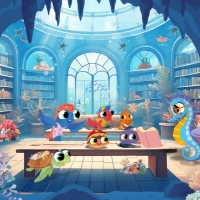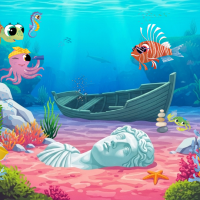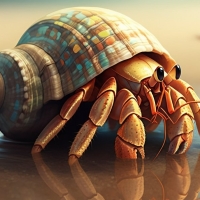
Stingrays: Super-Powered Marine Creatures
- Sophia's Blog
- Hits: 5846
Hello! Today, I want to dedicate this adventure to my super cool friend, Soter the stingray. He's brave and always ready to help. Get ready to dive into the wonderful world of stingrays and their giant cousins, the manta rays!
![]()
Flat, fab, and flying underwater!
Stingrays look like magical underwater pancakes or graceful flying saucers gliding through the water! With their smooth, flat bodies, wing-like fins and long tails, they “fly” underwater with smooth moves. It’s like an underwater ballet!
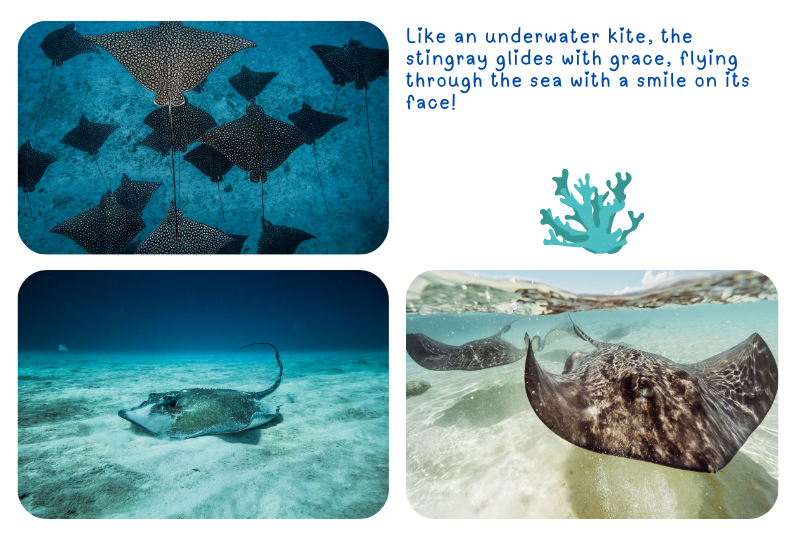
Stingrays have been around for over 150 million years, that’s since the time dinosaurs stomped on land! They’ve survived for such a long, long time because of their clever skills and amazing abilities.
They love living in warm, sunny oceans all around the world. Stingrays are actually close cousins to sharks, and just like sharks, they don’t have any hard bones! Instead, their bodies are made of cartilage, that bendy stuff you can feel in your nose or ears.
Ocean Floor Explorers: Their fins aren’t just for swimming, they also help stir up the ocean floor when stingrays go hunting for food. As they flap and shoot water from their mouths (which are on their bellies!), they dig up tasty treats like clams, worms, and little crabs hiding under the sand.
Masters of Hide-and-Seek! Have you ever played hide-and-seek? Well, stingrays are real champions at it! They can bury themselves in the sand, leaving only their eyes and tiny breathing holes (called spiracles) sticking out. That way, they stay safe from bigger animals like sharks, and can sneak up on snacks too!

Stingray Superpowers! Stingrays have some awesome superpowers!
One of their coolest tricks is called electroreception. That’s a big word for a special power: tiny gel-filled pits on their face let them sense electric signals from other animals, even when they’re buried in the sand! It’s like having a sixth sense that lets you feel the invisible electric zaps all around!
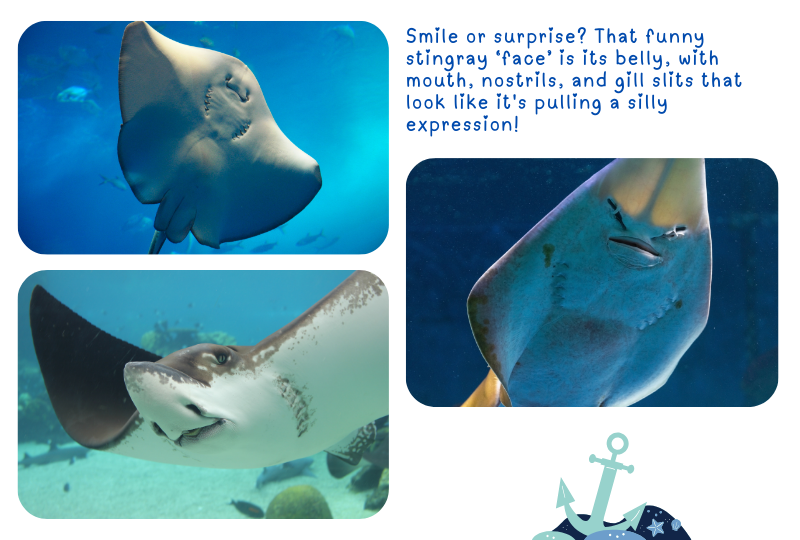
Their tails are pretty interesting too. Most stingrays have a sharp, pointy spine near the base of their tail. They only use it as a defence tool, like a shield, if they feel threatened. And if the spine breaks, they can grow a new one, like lizards!
Not all rays have stingers, though. Some are just too big and friendly to need them.
Baby Rays – Too Cute! Unlike turtles, stingrays don’t lay eggs. Instead, their babies grow inside the mother’s body. When they’re born, they come out ready to swim and hunt! These adorable little ones are called pups, and they look like mini stingrays. How cute is that?

Weird and Wonderful Habits Some stingrays can even make sounds! Scientists have recorded loud clicking noises, maybe as a way of saying, “Leave me alone!” when they’re scared. It’s amazing to think stingrays might have their own way of talking!
And did you know? Some stingrays, like the cownose ray, travel in huge groups. Thousands of them swimming together make what’s called a fever of rays. They journey together to find food and warm places to live.
![]()
The Manta Ray: A Giant, Gentle Cousin!
Manta rays are actually a type of ray, but they look a little different!
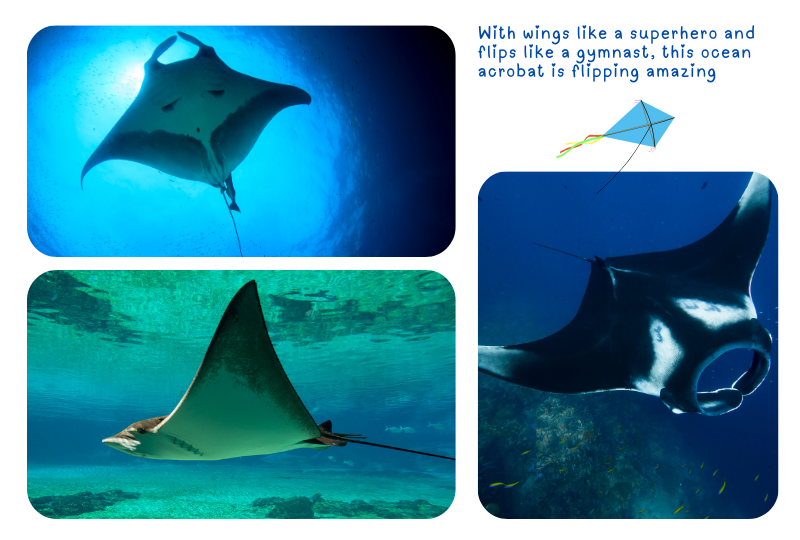
While there are over 200 species of stingrays, there are only two species of manta rays.
Over time, manta rays lost their stingers, but they got something super cool in return: cephalic lobes! These are special flaps on their face that act like food scoops, helping them funnel tiny plankton into their mouths. Like built-in food funnels!
Manta rays are HUGE; the giant oceanic manta ray can grow up to 8.8 metres across! That’s as long as a school bus!

They’re filter feeders, which means they swim with their mouths open, sipping up plankton, fish eggs, and tiny floating animals. They even do underwater somersaults while eating. I would love to see that!
And guess what? Manta rays can leap out of the water like dolphins! Scientists think they might do this to shake off parasites, send messages, or show off to find a mate.
They are strong swimmers, don’t have many natural predators, and use their speed and size to stay safe.
![]()
These Amazing Rays Need Our Help
Even though stingrays and manta rays are incredible, they need our help. Many are in danger because of:
- Overfishing (too many being caught),
- Pollution in their ocean homes,
- And losing their habitats, the special places they need to live and grow.
Right now, over 100 species of rays are threatened, and many more haven’t even been studied yet! That’s why it’s so important to protect their ocean homes, keep the water clean, and spread the word.
How to Stay Safe Around Stingrays
While stingrays are fascinating creatures, it's important to be cautious around them. Here are a few simple tips to stay safe:
- Shuffle Your Feet: When walking in shallow water, shuffle your feet. This can help scare away any stingrays that might be hiding in the sand.
- Avoid Touching: Never touch a stingray, even if it looks harmless.
- Obey Beach Rules: Always follow the rules and warnings posted at the beach.
![]()
Here are a few fun activities for you. Share it with us if you want.
⚓ Stingray Drawing
Draw a stingray swimming in the ocean, buried in the sand, or hunting for food, and colour it. Can you draw its tail, spiracles, and smile?
Label its parts.
⚓ Stingray Fact Sheet
Create a fact sheet about stingrays.
Include information about their size, diet, habitat, and unique features.
Decorate your fact sheet with pictures of stingrays.
⚓ Stingray Glide Game
What you need: open space, paper fins or fabric capes, friends!
How to play: Pretend to be stingrays and glide smoothly across the floor or grass. When a leader calls out "Predator!", you must freeze and lie flat like they’re hiding in sand. Great for learning about stingray behaviour and predators.
I’m off to count starfish!
Sophia the Seahorse


